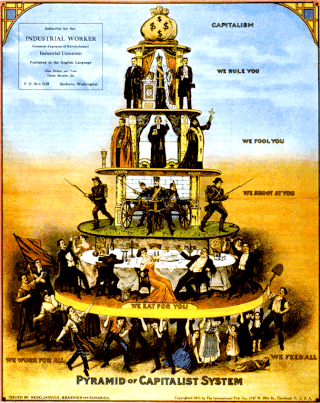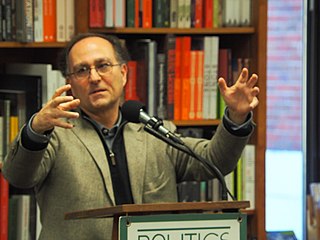Ad hominem, short for argumentum ad hominem, refers to several types of arguments that are fallacious. Typically this term refers to a rhetorical strategy where the speaker attacks the character, motive, or some other attribute of the person making an argument rather than attacking the substance of the argument itself. This avoids genuine debate by creating a personal attack as a diversion often using a totally irrelevant, but often highly charged attribute of the opponent's character or background. The most common form of this fallacy is "A" makes a claim of "fact," to which "B" asserts that "A" has a personal trait, quality or physical attribute that is repugnant thereby going entirely off-topic, and hence "B" concludes that "A" has their "fact" wrong - without ever addressing the point of the debate. Many contemporary politicians routinely use ad hominem attacks, which can be encapsulated to a derogatory nickname for a political opponent.

A false dilemma, also referred to as false dichotomy or false binary, is an informal fallacy based on a premise that erroneously limits what options are available. The source of the fallacy lies not in an invalid form of inference but in a false premise. This premise has the form of a disjunctive claim: it asserts that one among a number of alternatives must be true. This disjunction is problematic because it oversimplifies the choice by excluding viable alternatives, presenting the viewer with only two absolute choices when in fact, there could be many.
An irrelevant conclusion, also known as ignoratio elenchi or missing the point, is the informal fallacy of presenting an argument whose conclusion fails to address the issue in question. It falls into the broad class of relevance fallacies.
In classical rhetoric and logic, begging the question or assuming the conclusion is an informal fallacy that occurs when an argument's premises assume the truth of the conclusion. Historically, begging the question refers to a fault in a dialectical argument in which the speaker assumes some premise that has not been demonstrated to be true. In modern usage, it has come to refer to an argument in which the premises assume the conclusion without supporting it. This makes it an example of circular reasoning.

A fallacy is the use of invalid or otherwise faulty reasoning in the construction of an argument that may appear to be well-reasoned if unnoticed. The term was introduced in the Western intellectual tradition by the Aristotelian De Sophisticis Elenchis.
A faulty generalization is an informal fallacy wherein a conclusion is drawn about all or many instances of a phenomenon on the basis of one or a few instances of that phenomenon. It is similar to a proof by example in mathematics. It is an example of jumping to conclusions. For example, one may generalize about all people or all members of a group from what one knows about just one or a few people:
Procatalepsis, also called prolepsis or prebuttal, is a figure of speech in which the speaker raises an objection to their own argument and then immediately answers it. By doing so, the speaker hopes to strengthen the argument by dealing with possible counterarguments before the audience can raise them.

Logical reasoning is a mental activity that aims to arrive at a conclusion in a rigorous way. It happens in the form of inferences or arguments by starting from a set of premises and reasoning to a conclusion supported by these premises. The premises and the conclusion are propositions, i.e. true or false claims about what is the case. Together, they form an argument. Logical reasoning is norm-governed in the sense that it aims to formulate correct arguments that any rational person would find convincing. The main discipline studying logical reasoning is logic.

Informal fallacies are a type of incorrect argument in natural language. The source of the error is not just due to the form of the argument, as is the case for formal fallacies, but can also be due to their content and context. Fallacies, despite being incorrect, usually appear to be correct and thereby can seduce people into accepting and using them. These misleading appearances are often connected to various aspects of natural language, such as ambiguous or vague expressions, or the assumption of implicit premises instead of making them explicit.
Proof by assertion, sometimes informally referred to as proof by repeated assertion, is an informal fallacy in which a proposition is repeatedly restated regardless of contradiction and refutation. The proposition can sometimes be repeated until any challenges or opposition cease, letting the proponent assert it as fact, and solely due to a lack of challengers. In other cases, its repetition may be cited as evidence of its truth, in a variant of the appeal to authority or appeal to belief fallacies.
Douglas Neil Walton was a Canadian academic and author, known for his books and papers on argumentation, logical fallacies and informal logic. He was a Distinguished Research Fellow of the Centre for Research in Reasoning, Argumentation, and Rhetoric (CRRAR) at the University of Windsor, Ontario, Canada, and before that (2008–2014), he held the Assumption Chair of Argumentation Studies at the University of Windsor. Walton's work has been used to better prepare legal arguments and to help develop artificial intelligence.
Appeal to the stone, also known as argumentum ad lapidem, is a logical fallacy that dismisses an argument as untrue or absurd. The dismissal is made by stating or reiterating that the argument is absurd, without providing further argumentation. This theory is closely tied to proof by assertion due to the lack of evidence behind the statement and its attempt to persuade without providing any evidence.

Propaganda techniques are methods used in propaganda to convince an audience to believe what the propagandist wants them to believe. Many propaganda techniques are based on socio-psychological research. Many of these same techniques can be classified as logical fallacies or abusive power and control tactics.

The Art of Being Right: 38 Ways to Win an Argument is an acidulous, sarcastic treatise written by the German philosopher Arthur Schopenhauer. In it, Schopenhauer examines a total of thirty-eight methods of defeating one's opponent in a debate. He introduces his essay with the idea that philosophers have concentrated in ample measure on the rules of logic, but have not engaged with the darker art of the dialectic, of controversy. Whereas the purpose of logic is classically said to be a method of arriving at the truth, dialectic, says Schopenhauer, "... on the other hand, would treat of the intercourse between two rational beings who, because they are rational, ought to think in common, but who, as soon as they cease to agree like two clocks keeping exactly the same time, create a disputation, or intellectual contest."

In logic, reductio ad absurdum, also known as argumentum ad absurdum or apagogical arguments, is the form of argument that attempts to establish a claim by showing that the opposite scenario would lead to absurdity or contradiction.

Robert B. Talisse is an American philosopher and political theorist. He is currently Professor of Philosophy and Chair of the Philosophy Department at Vanderbilt University in Nashville, Tennessee, where he is also a Professor of Political Science. Talisse is a former editor of the academic journal Public Affairs Quarterly, and a regular contributor to the blog 3 Quarks Daily, where he posts a monthly column with his frequent co-author and fellow Vanderbilt philosopher Scott Aikin. He earned his PhD in Philosophy from the Graduate Center of the City University of New York in 2001. His principal area of research is political philosophy, with an emphasis on democratic theory and liberalism.
Scott F. Aikin is an American philosopher and assistant professor of philosophy at Vanderbilt University in Nashville, Tennessee, where he also holds a joint appointment in Classics. He earned an M.A. in philosophy from the University of Montana in 1999 and a Ph.D. in philosophy from Vanderbilt University in 2006. His principal areas of research are epistemology, argumentation theory, ancient philosophy, and pragmatism.
The motte-and-bailey fallacy is a form of argument and an informal fallacy where an arguer conflates two positions that share similarities, one modest and easy to defend and one much more controversial and harder to defend. The arguer advances the controversial position, but when challenged, insists that only the more modest position is being advanced. Upon retreating to the motte, the arguer can claim that the bailey has not been refuted or that the critic is unreasonable.







